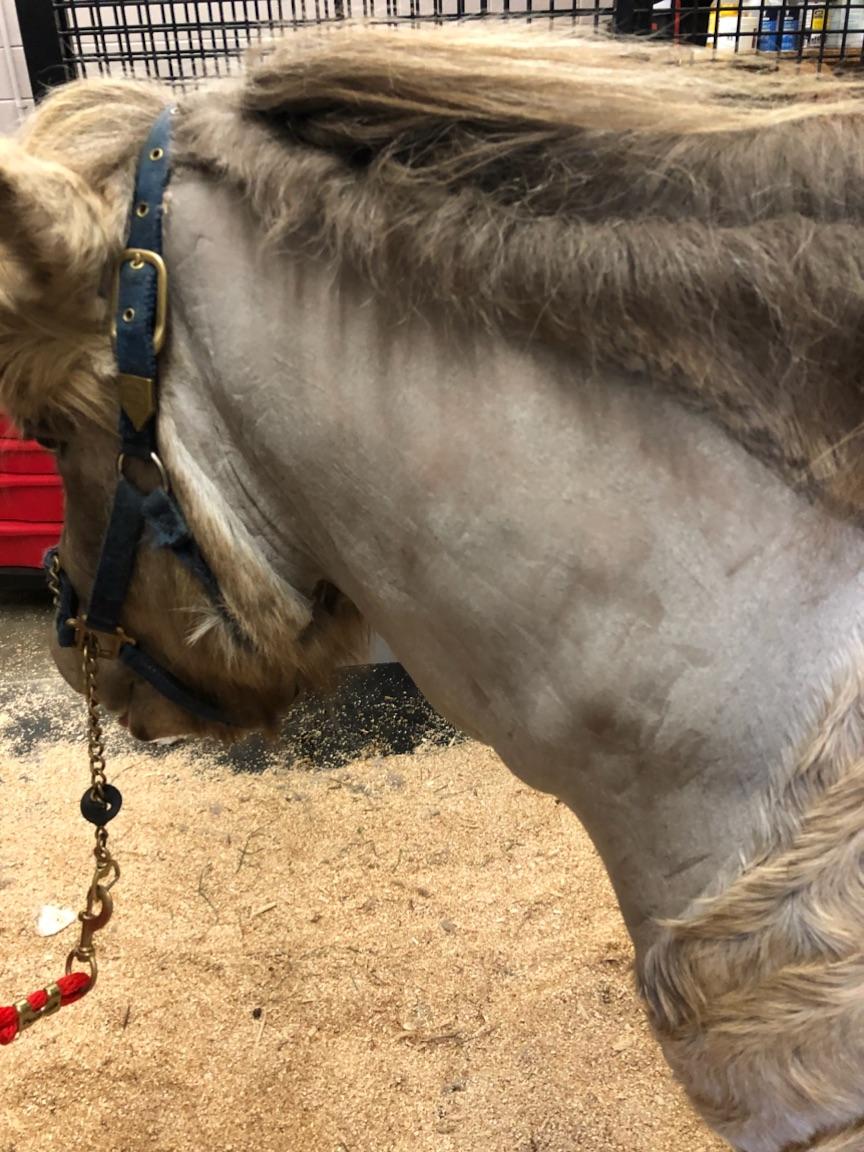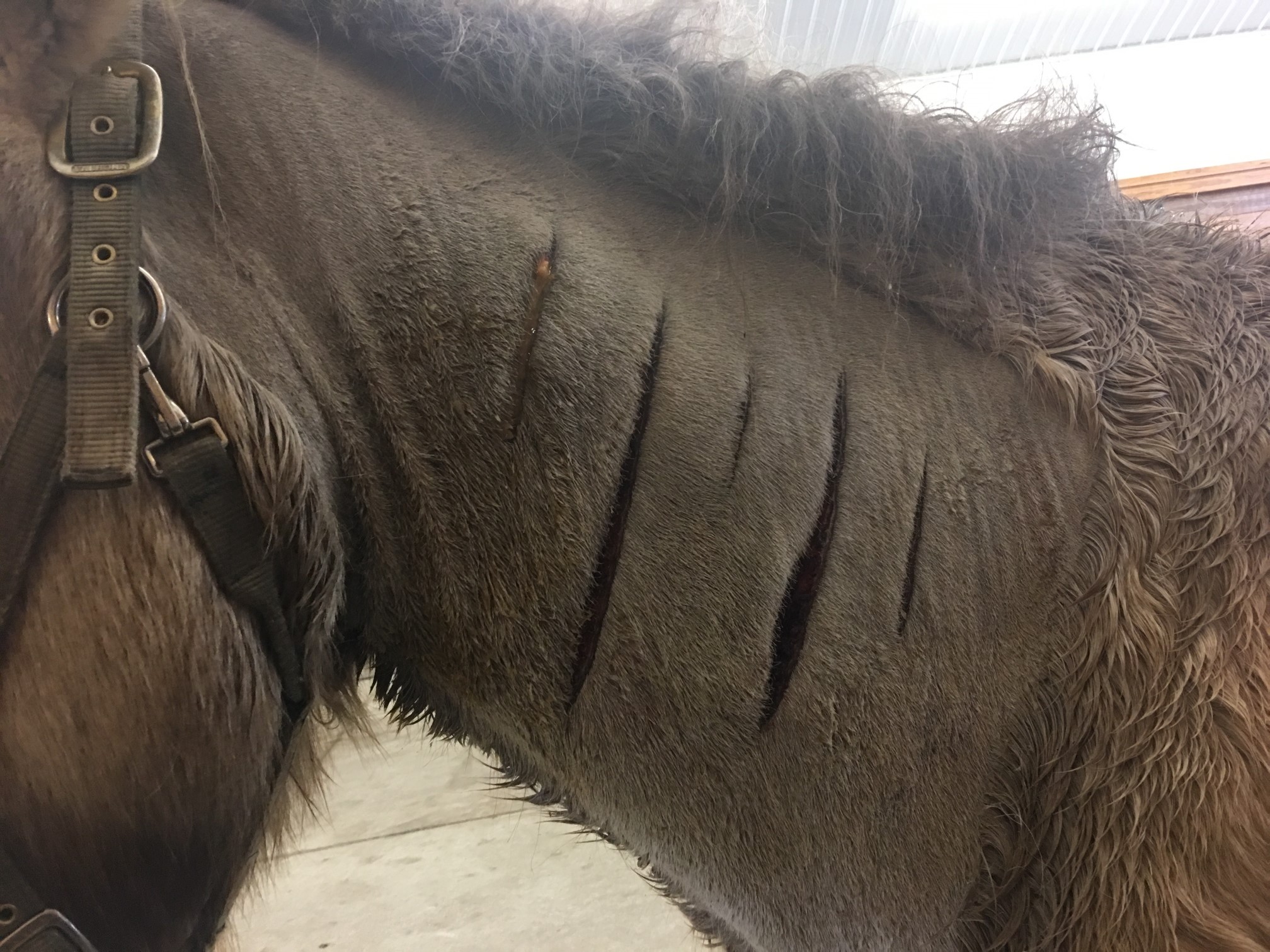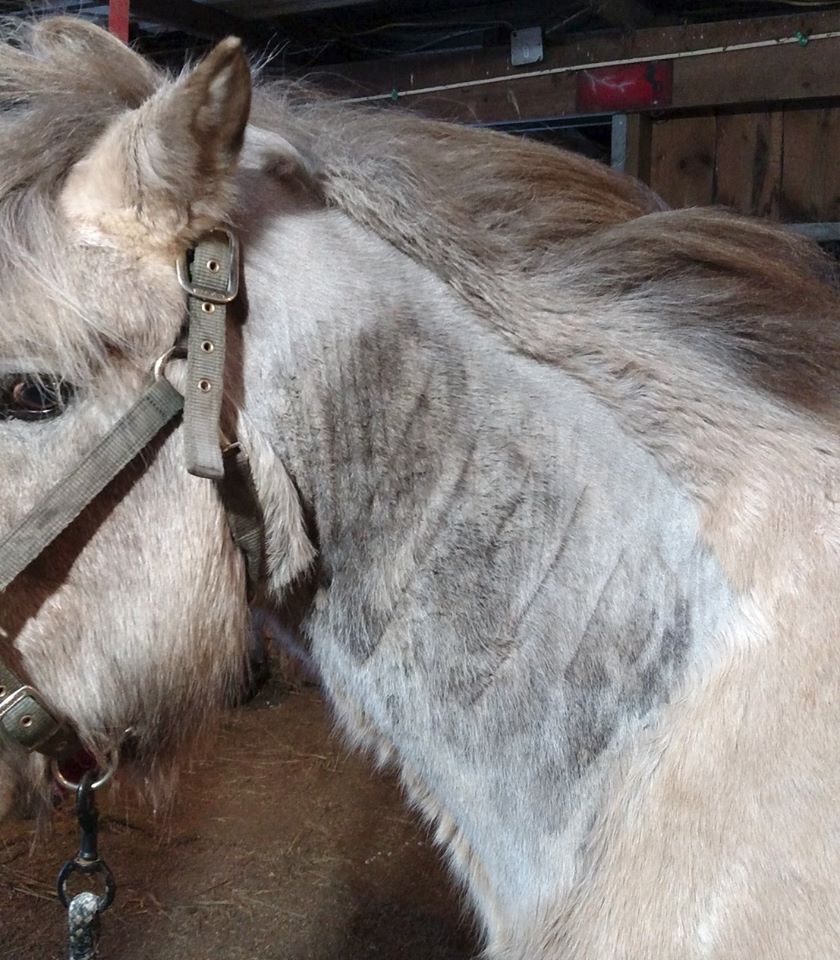What’s your diagnosis?
A 13 year old horse displays symptoms of colic and lethargy on Monday last week. He was treated with Flunixin by the care giver and tubed with mineral oil by the referring veterinarian. The symptoms of colic resolved, but Wednesday night spiked a fever (105 F) and did not eat. He presented to SVEC Thursday morning severely lethargic with an elevated respiratory rate and toxic mucous membranes (gums).
What is your diagnosis and next steps/treatments?

The Saginaw Valley Equine Answer
Answer: Upon physical exam, the left neck was found to be swollen and very painful. After clipping and an ultrasound of the neck, gas pockets were seen within the muscle layers. The diagnosis of Clostridial Myositis (Gas Gangrene) was made. Large incisions were made in the neck to bring oxygen to the anaerobic infection and create drainage. IV fluids, anti-inflammatories and antibiotics were started immediately. This is a gangrenous infection of the muscle due to the Flunixin injection (by the care giver) being given in the muscle. This infection progresses quickly with swellings filled with gas and if not treated aggressively it can be fatal. Even though the product is labeled for IM use, NEVER EVER give it this way to a horse! View the pictures below!
Update: Three weeks post initial exam
Case #1102 is doing well and his incisions are healing. One incision did develop a small amount of discharge. At this recheck, the wound was flushed and purulent debris was removed. Thanks to the diligence of his owner he is progressing wonderfully. They will continue to flush the wound at home, and he will continue antibiotics and anti-inflammatories for the time being.

Update: Six weeks post initial exam
Case #1102 is almost completely healed up. All drainage has stopped and he is off antibiotics.





